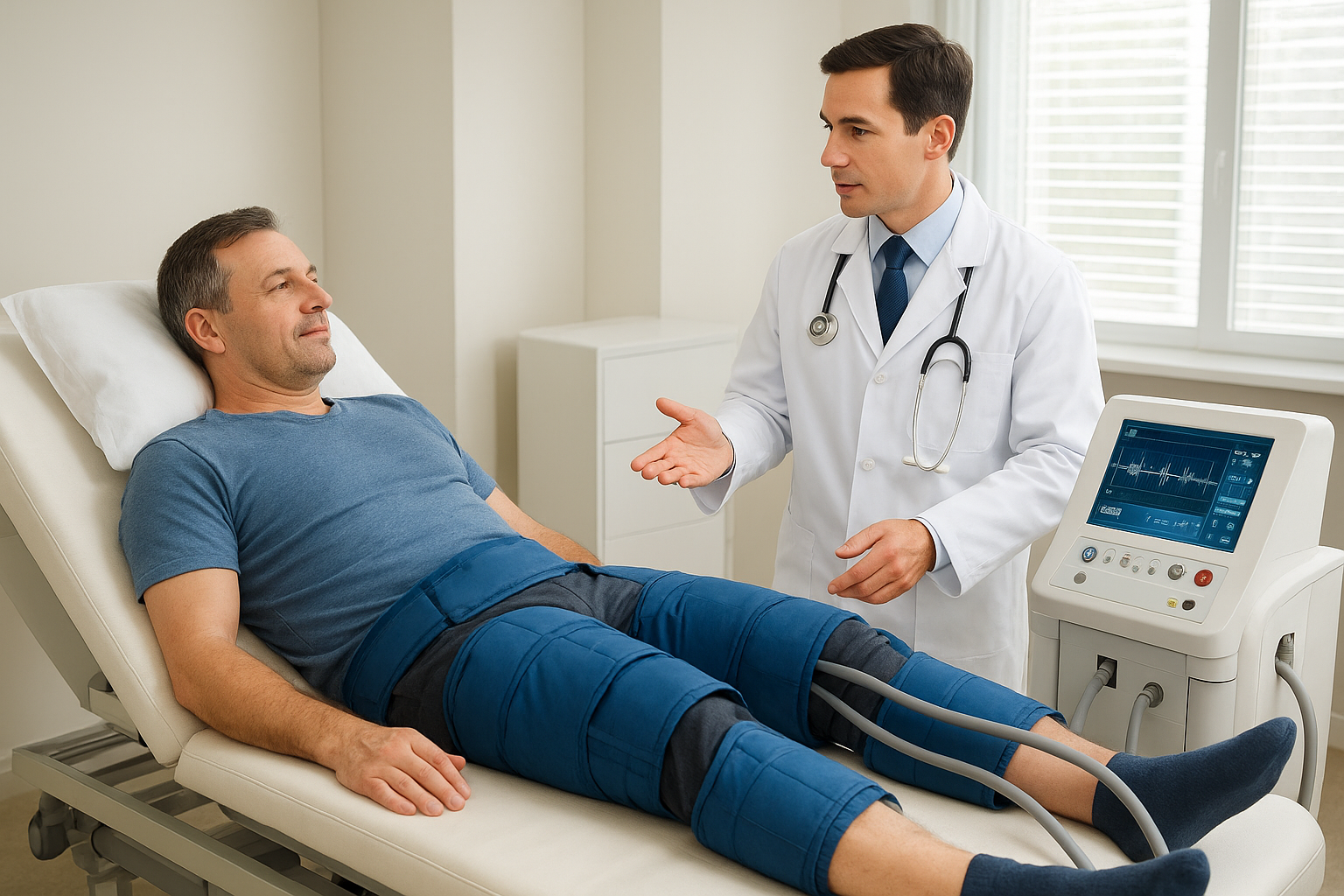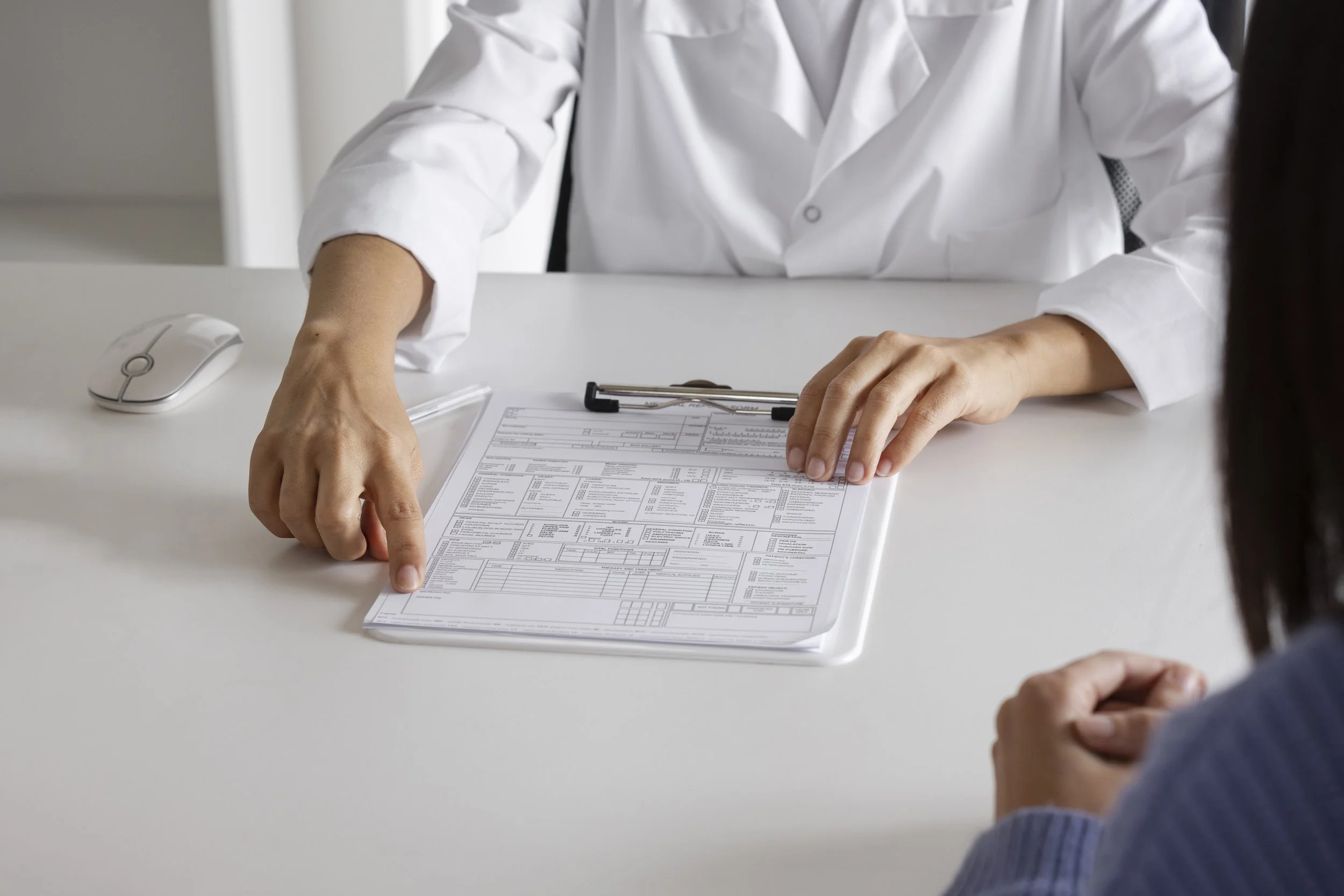DIAGNOSTIC AND TECHNICAL SERVICES
Enhanced External Counterpulsation
Enhanced External Counterpulsation (EECP) is a non-invasive therapy used to improve blood flow to the heart, particularly in individuals experiencing angina. During treatment, inflatable cuffs are wrapped around the lower legs, upper legs, and buttocks. These cuffs inflate and deflate in sync with your heartbeat to increase venous return to the heart, helping boost oxygen supply to heart tissues and reduce cardiac workload.
Treatment typically involves one-hour sessions, five days a week, for a total of seven weeks.
Background
EECP was first developed in China in the 1960s and has been widely used in the United States since the early 2000s. The technique is based on the same physiological principles as the intra-aortic balloon pump (IABP), aiming to improve cardiac perfusion by increasing blood return to the heart.
Who May Benefit from EECP
EECP is recommended for patients with stable but disabling angina who are not ideal candidates for surgical or catheter-based interventions due to high surgical risk or complex anatomy. It is also used in individuals with stable systolic heart failure.
In addition to these FDA-approved indications, recent research suggests EECP may offer benefits for individuals with Long COVID, particularly those experiencing vascular dysfunction and fatigue. In a study involving 231 Long COVID patients, notable improvements were observed in several areas:
Fatigue: Significant reduction in fatigue scores
Angina: Moderate to severe angina dropped from 54.8% to 17.5%
Dyspnea (shortness of breath): Decreased from 84.9% to 35.9%
Cognitive symptoms ("brain fog"): Improved in 90.3% of patients
Work capacity: Among patients unable to work, 78.3% returned to work post-treatment
Who Should Not Receive EECP
EECP may not be appropriate for individuals with the following conditions:
Hypertrophic cardiomyopathy
Congenital heart disease
Severe valvular disease
Atrial fibrillation
Blood clots or other serious vascular conditions
What to Expect Before and After Treatment
Prior to starting EECP, you’ll undergo a comprehensive pre-treatment assessment, which includes:
A nursing intake and health review
A stress test
Lower extremity venous ultrasound
A full orientation session to ensure your comfort and understanding of the procedure
Another stress test may be repeated after the 7-week course to assess changes in exercise tolerance and chest pain.

Why It Matters
Long COVID can lead to persistent symptoms such as fatigue, chest discomfort, cognitive issues, and exercise intolerance. EECP offers a low-risk, non-invasive option for patients who may be navigating vascular dysfunction, POTS, or persistent angina symptoms. While further research is ongoing, many patients report meaningful improvements in quality of life.
-
EECP is often reimbursed by insurance. Patients can access Sheer Health for more information.
Individual Session: $250 per 1-hour treatment
Bundled Package: $9,000 for 35 sessions, including pre- and post-treatment treadmill stress testing
Lower Extremity Doppler (required before starting treatment): $300 – $1,000, depending on location and facility
-




